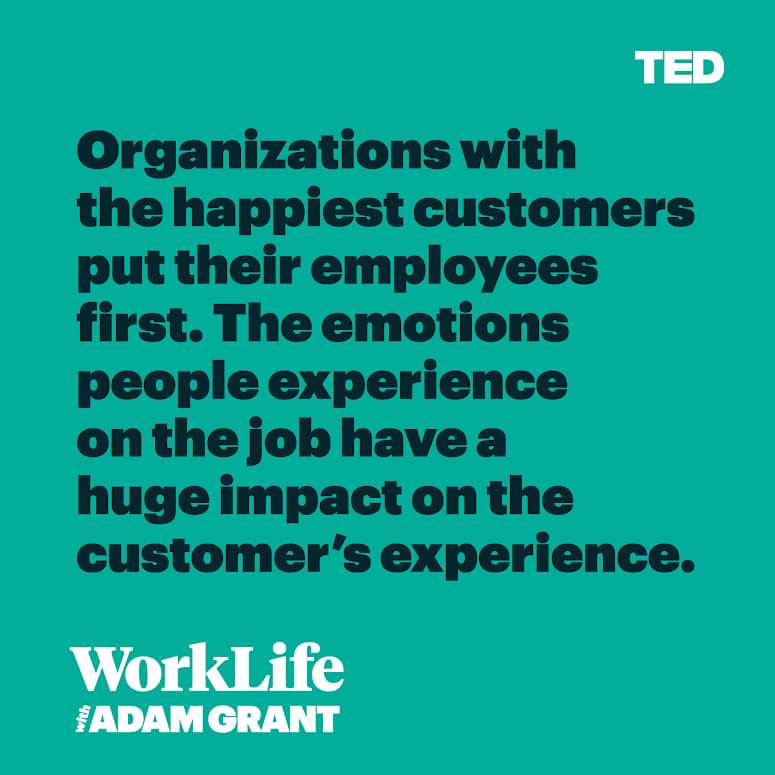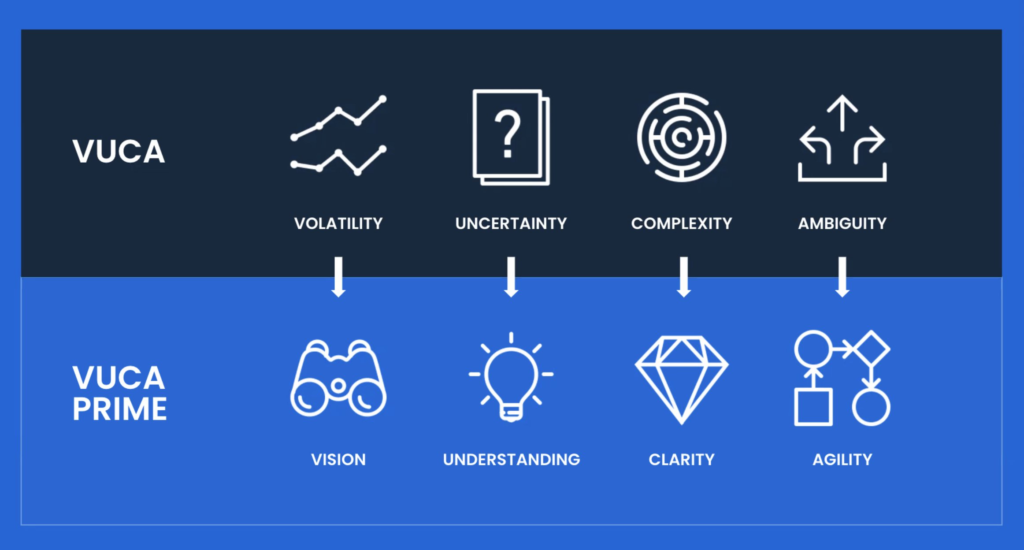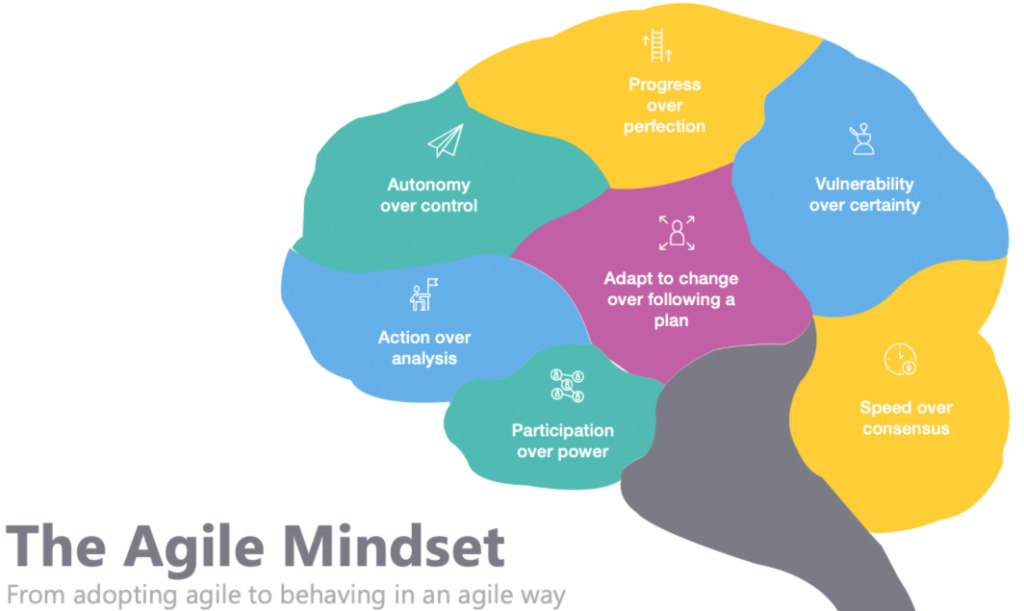
Navigating our complex world with an Agile mindset
Agile, Scrum & Kanban … just some of the latest buzzwords that seem to have seeped through all branches in recent years. While some think these terms denote a short-lived fashionable trend, some others believe they refer to our future way of working. What makes Agile so special that it may shape the way people work together independently on the type of industry? The answer is simple and yet it needs to sink in: Agile isn’t merely a methodology – it’s a mindset with respect to people management.
While a methodology is a way of doing things in a systematic way, our mindset is a set of assumptions, beliefs and attitudes towards oneself, others and the world. Our mindset itself is rooted in our values. In other words, what we value shapes our beliefs and our worldview.
– Differentiating between methodology, mindset & values
The Agile Mindset
While Agile is nothing that can be described in a single sentence and there is no concise official definition, we may boil the agile mindset down to its core values (as opposed to the values of traditional waterfall management)*:
- Self-Organisation & Participation (as opposed to top-down management): The agile mind/organisation accepts and appreciates that any complex system (such as our brains or social systems, like organisations) are self-organised by nature. This means that anyone who has a relevant contribution to make is invited to do so (participation). Further, the people who do the work decide on how they do it.
- Systems thinking (as opposed to perceiving parts of the system as independent from each other): The Agile mind acknowledges that all parts of a system are interconnected in a non-linear (“complex”) way. Therefore, applying a holistic/ systemic view on whatever situation/ system we are facing, is crucial for navigating our complex world. This means, for example, that optimizing a component of the system does not necessarily optimize the whole system**.
- Courage (as opposed to hiding behind management decisions, fixed project plans and avoiding risks): The agile mind/organisation values experimentation to keep improving, which includes: Incremental planning & building – inspect – learn – adapt. This also involves an open mind to risk taking and making mistakes. Continuous learning by means of (self-) reflection (“reflexion”) takes the courage to be vulnerable.
- Respect & Trust (as opposed to respect for status & distrusting employees): The agile mind/organisation trusts co-workers & employees to be capable of doing their work well, given the right facilitation, and respects them as fellow human beings of equal value, irrespective of any differences.
- Openness & Transparency (as opposed to secrecy & hiding mistakes): The agile mind/organisation values open & transparent communication with regards to the work, its challenges and fall-backs – both within the organisation, but also towards the customers/ stakeholders. Only on this basis true insight can be gained and improved upon.
- Focus (as opposed to following the fixed project plan and unnecessary meetings): The agile mind/organisation focusses – above all – on customer & employee satisfaction and the alignment between the organisation’s individuals and its vision. At any moment, the agile mind/organisation optimises spending (time) resources with respect to whether it increases the value for the customer or employee satisfaction. The latter is important, because only satisfied & aligned employees are likely to be healthier, and to be autonomously motivated, which, in turn, increases their loyalty to the company and its vision.
- Commitment & Psychological ownership (as opposed to fixed accountabilities according to a job description): The agile mind/organisation values sticking to commitments made and clear communication shall a change occur which threatens the commitment. This involves a strong sense of accountability – owning the commitments made. Autonomously motivated employees are more likely to commit to and own the goals of the organisation.
- Ambiguity tolerance (as opposed to perceiving the world in absolutes): There are certainly indisputable facts about the physical and the social world. However, the Agile mind/organisation accepts that our perception of these facts and their relevance depend on the situation and context.
These values are the essence of an Agile Mindset that underpins an Agile culture. While most people seem to think that Agile is solely an umbrella term for value delivery frameworks based on agile values, such as Scrum or Kanban, Agile actually is that set of values. What makes it so difficult to wrap our minds around the difference between Agile and traditional management is that the Agile Mindset actually requires a paradigm shift from the classical logic underpinning top-down management to a logic that fosters self-organisation and trust. In other words, Agile is not just about plugging in a different method, but actually transforming the underlying logic. Living this logic is “being” agile and will result in “doing” agile automatically on individual level, since every decision we make is based on our values. If managers facilitate this (or at the very least do not hinder this), an Agile culture emerges from the Agile mindset of individuals. Doing agile may also be a good way to start; as we have learned from Synergetics, macro phenomena (e.g. team using Scrum as management framework) may influence micro phenomena (e.g. our individual mindsets) and thereby shape an Agile culture. Then we constantly need to remind ourselves, however, that the framework is a means to an end and not the end itself.
Based on an Agile Mindset, the Agile Manifesto was developed in 2001, consisting of 12 principles and 4 so-called values, which I will dive in deeper in future blog articles. These principles may be interpreted as calls to action in an Agile context and the values refer to a comparison between what a traditional versus what an agile organisation places importance on. Personally, I find it a bit confusing that the developers of the Agile Manifesto denoted these as values, because values are really something that the mindset springs from (see above).
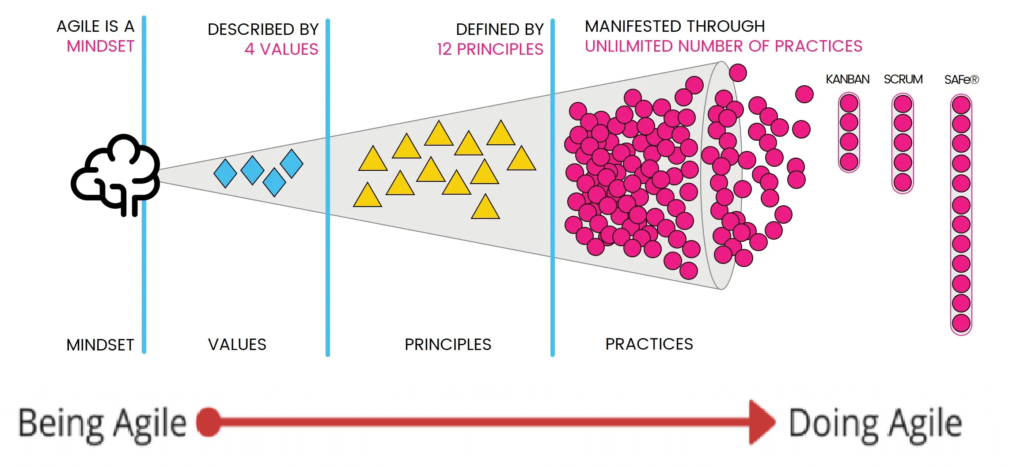
Why bother with the Agile Mindset?
Today’s workforce consists mainly of so-called knowledge workers. As opposed to the “blue-collar” workers, preforming mainly manual tasks, knowledge workers are defined as high-level workers who apply theoretical and analytical knowledge to develop products and services. This kind of creative development is intrinsically more complex than the manual tasks we are used to from the industrial conveyor belt related work.
Quite generally, our world has become increasingly more complex and uncertain. Our world has become VUCA:
- Volatile: Our world – including its industries & markets – changes with increasing and differing nature, speed, volume and magnitude. The more volatile an environment, the more it responds to the change.
- Uncertain: In today’s world more is unknown than there is known. The only certainty is uncertainty. We can only predict the future very limitedly. This is what is referred to as the cone of uncertainty.
- Complex: Today’s world consists of a multitude and diverse set of interconnected factors that need to be taken into account when making (work-related) decisions. This complex interconnectedness of various aspects means that we need to move away from our linear understanding of the world, towards an understanding that input and output may be related in non-linear (not proportionate) ways.
- Ambiguous: While modern science provides us with a vast knowledge about that facts of our world, many decisions need to be made on basis of the interpretation of these facts with respect to their meaning in a specific context. In our ambiguous world there may not be many absolutely “rights or “wrongs” but rather a “suitable” depending on the context.
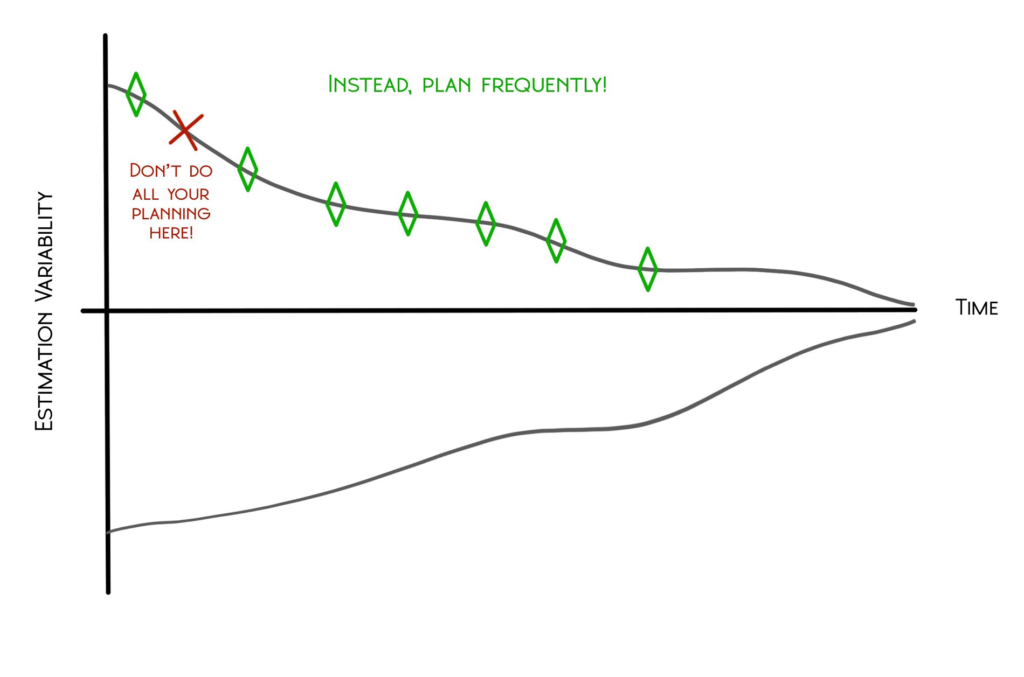
The Agile iterative approach can cope much better with a VUCA world than the sequential & linear waterfall approach. VUCA’ is a behavioural leadership model, developed to counteract each of the four aspects of VUCA with a constructive Agile response:
VUCA’:
- Vision: In a world that is undergoing constant change, a shared vision aligns members of the organisation, customers & stakeholders. This vision gives purpose and meaning, which increases the autonomous motivation of employees, and, in turn, their commitment to the vision.
- Understanding: The Agile’s way of incremental & iterative experimenting shines light on otherwise hidden factors and thereby reduces uncertainty to the extent possible at a given moment in time.
- Clarity: By simplifying some processes, some complexity can virtually be reduced. Think of it like that: Usually, in a family, we always sit at the same spot at the table – because it makes life simpler. Instead of being faced with a choice each time (in fact you can choose from a number of places), you sit down at the same place – voilà you virtually reduced the complexity of the situation. Personally, I would add that facilitating self-organisation also helps to embrace complexity instead of trying to control it.
- Agility: Adaption of the approach to match the desired outcome helps in a world where what is suitable is context-dependent. Agility provides a graceful response to changing/ unknown customer needs. I personally would add that ambiguity tolerance also helps in counteracting ambiguity and that it is an important aspect of the Agile Mindset (see above).
In addition to VUCA’, I would add another factor to deal with VUCA: Individuals embracing and fostering their – what I call – evidence-based intuition:
As opposed to traditional management, where hard facts are the only legitimate source of decision-making, evidence-based intuition, is crucial to make decisions in a world that is too complex and changing too quickly as to fully understand it rationally at a given moment in time. Continuously testing our gut feeling against reality results in asymptotically improving its accuracy and (in)forms our evidence-based intuition. This is a vital capacity to have as an individual to successfully navigate the VUCA world. Whether as an employee, as a leader or in private life.
– Evidence-based intuition; Julia Heuritsch
The Agile Leader: Facilitator
Since Agility embraces self-organisation, the agile leader is less of a traditional manager and more of a facilitator & coach. A true Agile leader facilitates the Agile values and asks the employees the right questions with respect to what they need to perform their work effectively. An Agile leader is a servant leader who enables participation and trusts their employees to get their job done. The servant leader empowers and gives guidance, enables synergies and supports removing impediments.
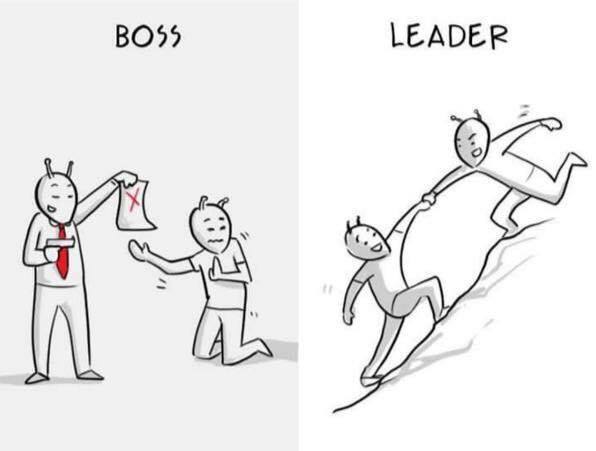
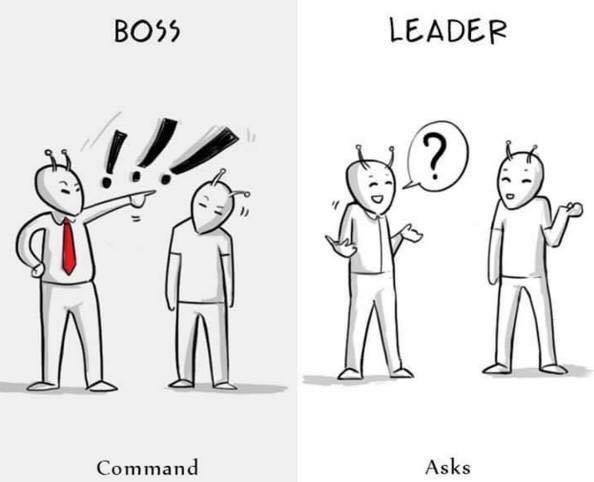
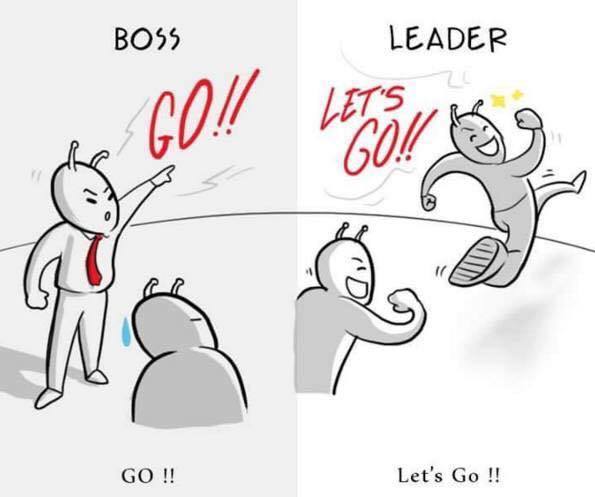
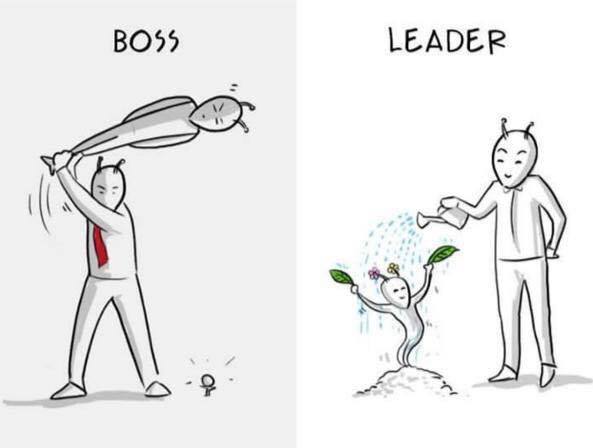

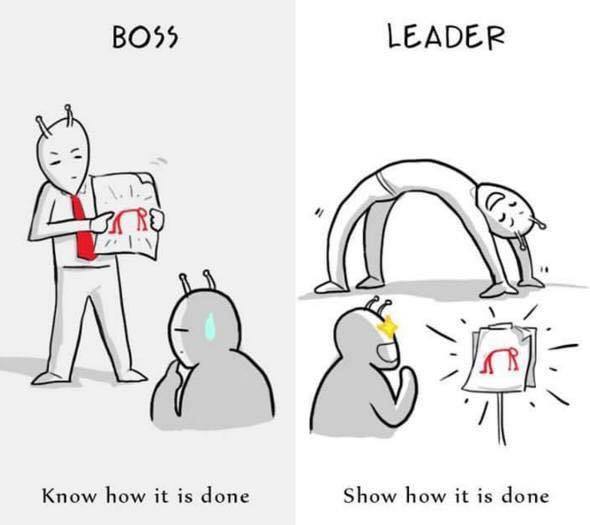
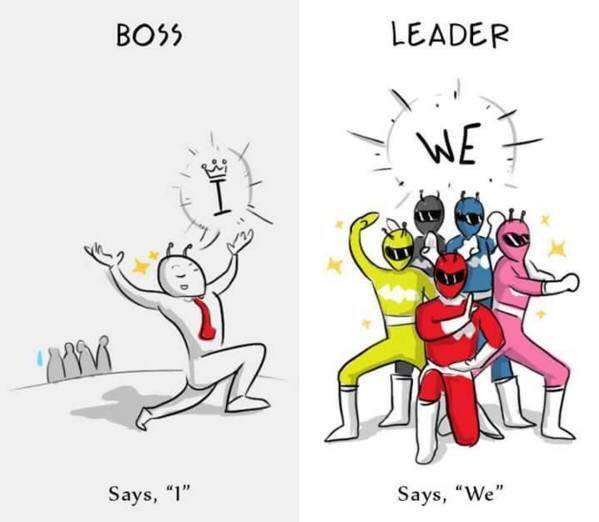
Conclusion
In summary, it seems that in today’s VUCA world knowledge workers may be more effective in producing value for the customer when they have the freedom to self-organise their work, together with the colleagues with whom they have dependencies. Agile methodologies, such as Scrum, are no rocket science; they are lightweight frameworks, applicable to any (work) context. Their essence does not so much lie in their rules but more in their values. Agile is a mindset, which continuously reminds as to place focus on customer value, employee motivation and inter-organisational alignment. There have been many case studies that Agile ways of working effectively increase the organisation’s revenue. While the likelihood is large that Agile will deliver results, such as increased revenue, customer & employee satisfaction, given the nature of our VUCA world, Agile cannot give any hard promises, nor blueprint solutions. However, the Agile mindset represents the most constructive way we have to go about organising ourselves together with other people to pursue common goals.
* I created this list based on the literature I have read on self-organisation, ambiguity tolerance & Laloux’ “Reinventing Organizations” and the trainings I have undertaken (PSM I, PSPO I, PAL I, PAL-EBM & SPC). Moreover, most of the Agile core values are actually overlapping with the 5 Scrum values & 4 SAFe values, both of which are frameworks which are built on Agile values. ** A good example for applying a systemic view on a controversial topic is this science-based video on climate change.
Written by Julia Heuritsch | Last edited: 25th May 2023
